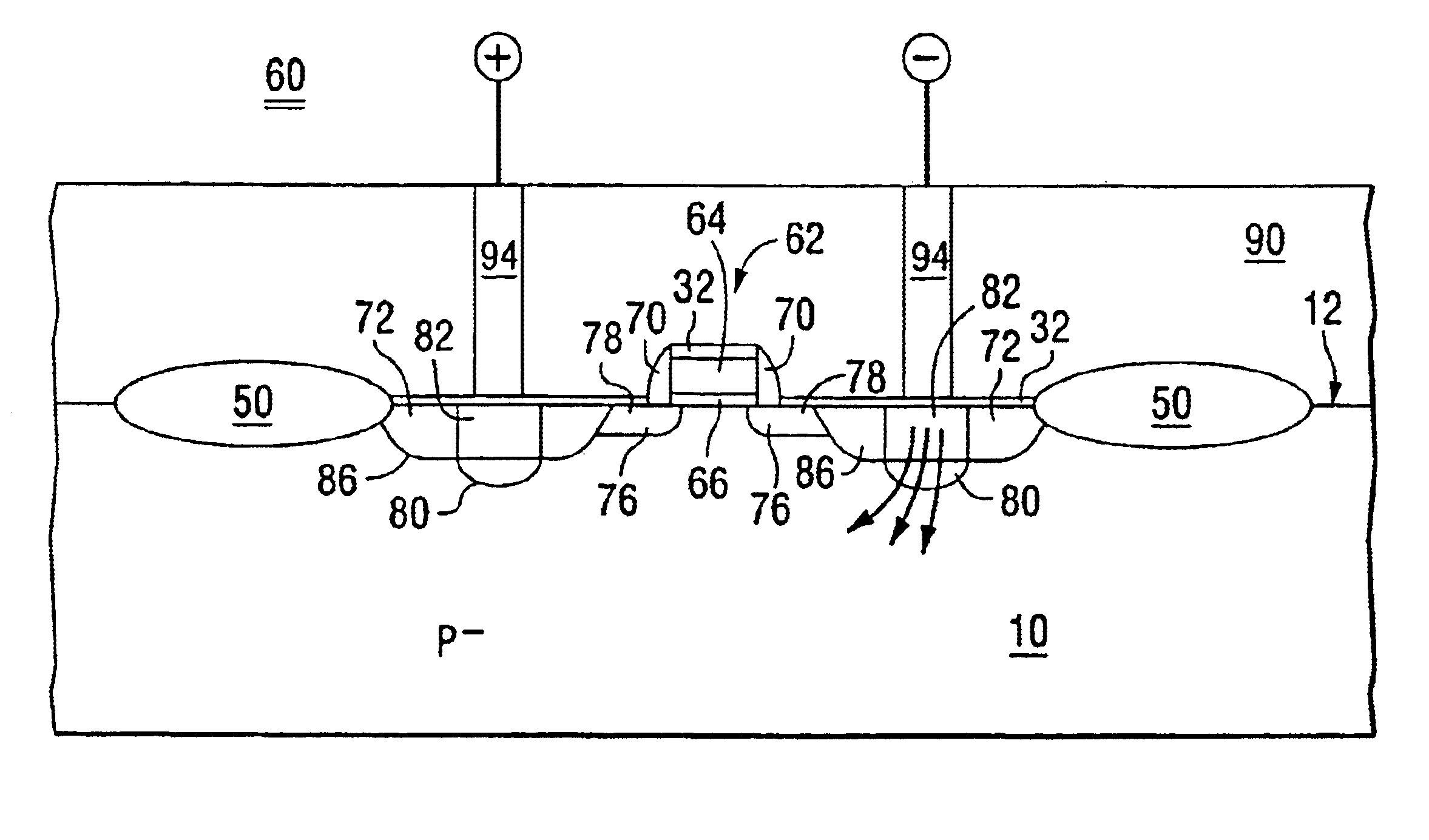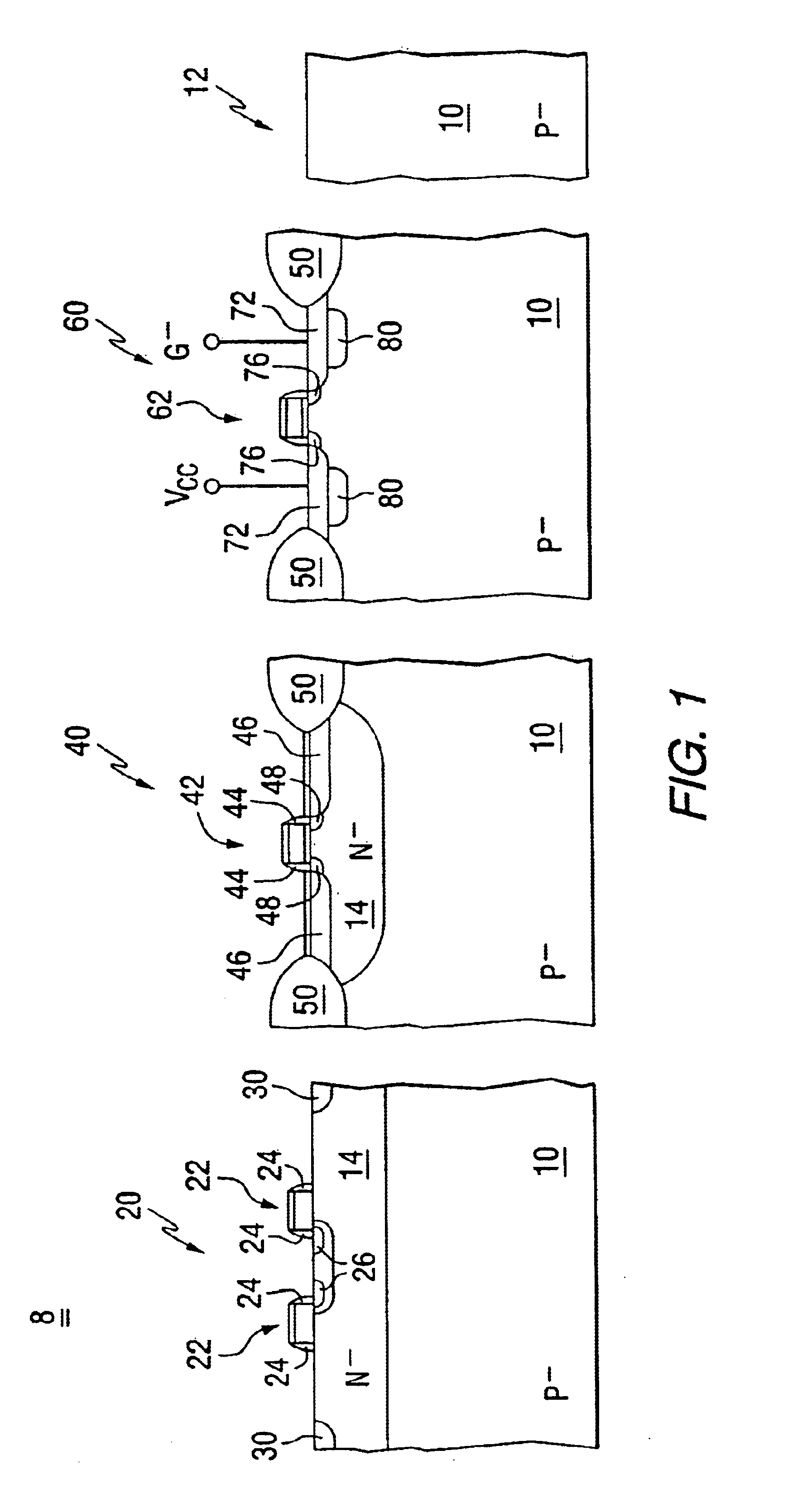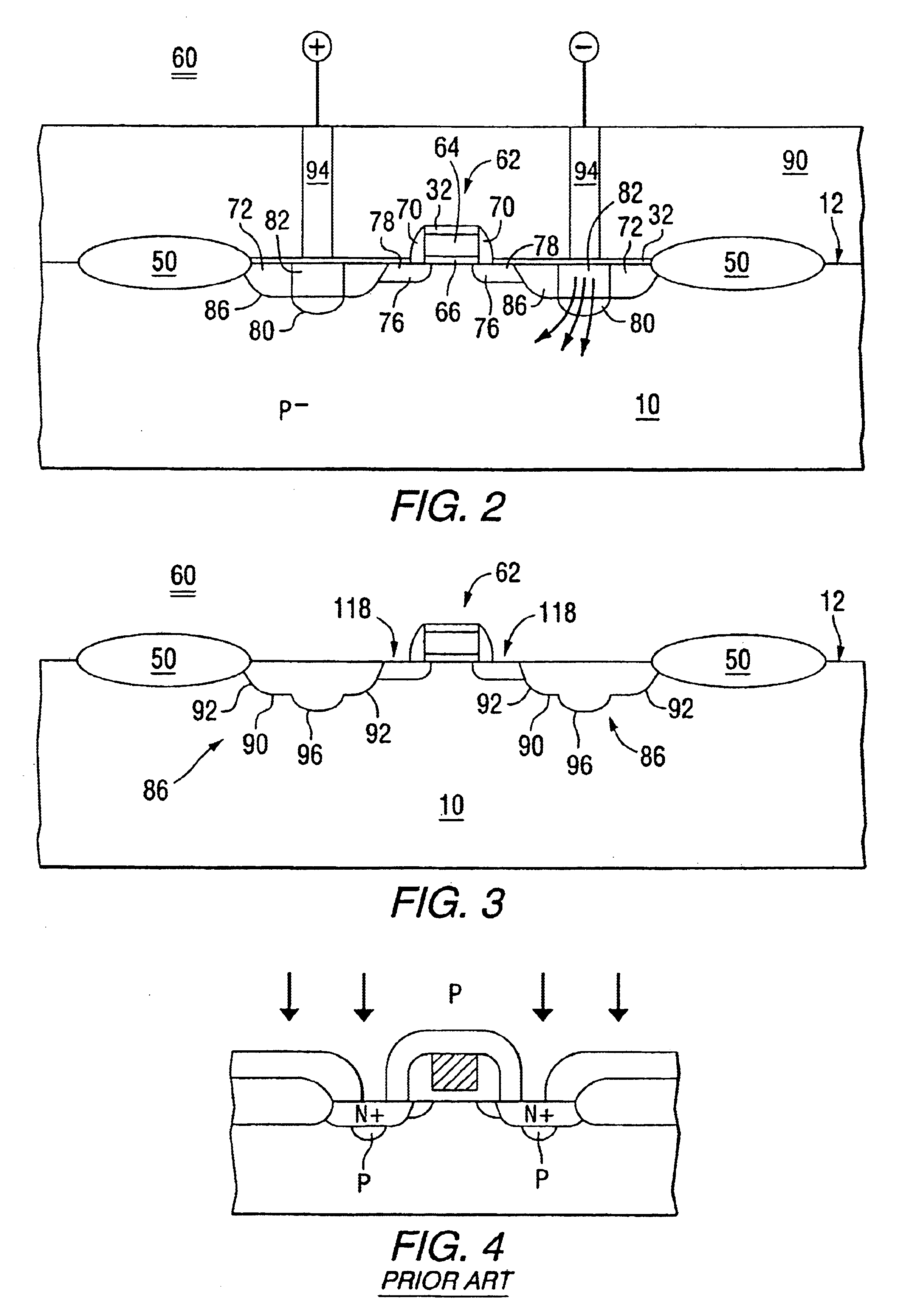ESD protection for semiconductor products
a technology of esd protection and semiconductor products, applied in the direction of semiconductor devices, semiconductor/solid-state device details, electrical apparatus, etc., can solve the problems of unintended conduction, thermal damage, and the effort to economically integrate esd protection devices on an integrated circuit requires compromises in performance or manufacturing costs, so as to reduce the current density and reduce the lateral current
- Summary
- Abstract
- Description
- Claims
- Application Information
AI Technical Summary
Benefits of technology
Problems solved by technology
Method used
Image
Examples
Embodiment Construction
In the following descriptions any dimensions provided are with reference to distances taken along the corresponding view. In a cross sectional view, a width or lateral dimension is intended to mean a distance along a horizontal plane parallel with a plane semiconductor surface, while a height or depth is intended to mean a distance taken along a vertical dimension of the view, more or less orthogonal with the plane semiconductor surface. For purposes of comparing example embodiments of the invention with prior-known designs, it may be assumed that all devices illustrated are fabricated with the same photolithographic capability. The disclosed embodiments assume a minimum feature size, i.e., line width geometry, of 0.35 micron although the invention is applicable to a wide range of line width geometries, device densities and types of semiconductor products.
As used herein the term substrate means a layer over which or in which a structure such as a portion of a transistor device is fo...
PUM
 Login to View More
Login to View More Abstract
Description
Claims
Application Information
 Login to View More
Login to View More - R&D
- Intellectual Property
- Life Sciences
- Materials
- Tech Scout
- Unparalleled Data Quality
- Higher Quality Content
- 60% Fewer Hallucinations
Browse by: Latest US Patents, China's latest patents, Technical Efficacy Thesaurus, Application Domain, Technology Topic, Popular Technical Reports.
© 2025 PatSnap. All rights reserved.Legal|Privacy policy|Modern Slavery Act Transparency Statement|Sitemap|About US| Contact US: help@patsnap.com



